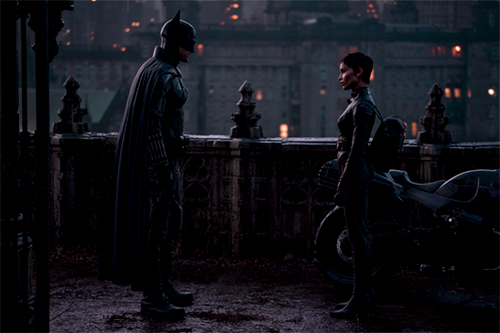
We're eagerly awaiting Robert Pattinson's interpretation of the Dark Knight in the forthcoming The Batman. Director Matt Reeves' comic book thriller takes the title character back to his roots, depicting a crime-fighting hero who must straddle both the upper quadrants and seamier quarters of the crime-ridden Gotham City.
Pattinson's take on the classic character has only been made possible thanks to the richly textured history of Batman on the big screen. Every actor's portrayal of Batman is, in some way, indebted to what has come before, so while we anticipate the new movie's arrival, let's explore the various incarnations of the Caped Crusader.
1. Adam West
Holy campy lycra, Batman! It's quite a jolt to be reminded of Batman's big-screen origins, but the enjoyably silly Adam West movie, adapted from the hit TV series, very much has its place. West plays Bruce Wayne in the 1966 film, accompanied by Burt Ward as Dick Grayson, and the movie never pretends to be anything other than a cartoonish farce. Approach it on those terms and Batman is actually good fun with some amusingly meta jokes ("There's never a good day to get rid of a bomb!") and more wince-inducing puns than you can shake Arnold Schwarzenegger's Mr. Freeze at.
Meanwhile, the actors playing the cabal of villains are clearly having a great time. Cesar Romero's Joker (complete with awkwardly painted-over moustache) and Burgess Meredith's Penguin, the latter of whom takes facial contortion to an art form, are among those lining up to be 'biffed' and 'powed' into a stupor. (This provides the basis for one of the funniest jokes in the later The LEGO Batman Movie.)
Mock the movie all you like, but it did establish many of the tenets that were absorbed in the later, more serious Batman movies including the diabolical schemes hatched by the villains and the Batmobile. Indeed, one imagines that the darker tone of the later Tim Burton movies emerged as a direct riposte to the Adam West era, so in hindsight, it becomes clear that this movie set a lot of Batman iconography in motion.
2. Michael Keaton
There was an outcry in 1989 when it was announced that the wacky star of Beetlejuice, Michael Keaton, would be adopting the mantle of the Caped Crusader. (Many of these critics clearly had short memories – could they not recall the insanity of the Adam West movie?) In fact, Tim Burton's first Batman movie credited Jack Nicholson's Joker in front of Keaton's Dark Knight, an indication of how Nicholson's star profile sought to inject the movie with A-list credibility.
Let's not forget that at the time of Batman's release, comic book movies weren't in a good way. Following the release of 1978's Superman, the Man of Steel franchise had badly fallen into disrepair and reached its nadir with 1987's The Quest for Peace. Burton and distributor Warner Bros, therefore, had to shoulder an immense amount of pressure from both Batman fans and newbies alike. As a filmmaker, Burton was compelled to walk the divide between the operatically overwrought and the authentically dark tone of Frank Miller's comics. This Batman had to be sophisticated and audience-pleasing, self-aware (largely stemming from Nicholson's flamboyance) and dramatically satisfying.
Judging from Batman's eventual box office gross, there's no denying Burton pulled it off. Buoyed by extensive marketing tie-ins, Nicholson's performance and Keaton's ultimately successful breakout role, Batman became the most financially successful superhero movie up to that point, grossing more than $400 million worldwide. The visual and thematic darkness of the movie, rendered in everything from Anton Furst's production designs to Danny Elfman's thunderous score and Keaton's introverted portrayal, proved hugely influential, signalling that a comic book movie could take itself just seriously enough without alienating the audience.
In 1992, Burton, newly emboldened with plenty of creative freedom following the success of both Batman and Edward Scissorhands, delivered a truly unfettered Batman experience. The twisted Batman Returns was clearly closer to Burton's own artistic sensibilities, less commercially compromised in its willingness to creep the audience out.
So strong was Danny DeVito's portrayal of The Penguin, among other things, that McDonald's cancelled their Happy Meal tie-ins, uncomfortable that the movie's relatively more graphic tone didn't sit well with family audiences. Batman Returns was still a commercial hit, albeit less so than the initial Batman movie, but the film's darkness compelled Warner Bros to move in a drastically different direction.
3. Kevin Conroy
The best Batman voice? It has to belong to the Batman actor who never physically appears on the big screen. Conroy first took on the mantle in Batman: The Animated Series, which ran from 1992 to 1995, and he proved a big hit with the fans, nailing both Bruce Wayne's tormented introspection and Batman's barely contained rage. In fact, he's credited as the first voice actor to differentiate between the voices of Bruce Wayne and Batman, picking up the mantle from Keaton who had deployed the same tactic in his movies.
In a clear sign of the Batman character's versatility, the animated incarnation popped with just as much emotional resonance as Keaton's portrayal, largely thanks to Conroy's diligence and respect for the mythology. Conroy would later extend his responsibilities beyond the initial TV series, taking centre stage as Batman in a host of animated movie spin-offs and additional shows. Collectively, these make up the DC Animated Universe, encompassing critical hits including 1993's Batman: Mask of the Phantasm (scored to sublime effect by Batman 1989's conductor Shirley Walker) and 2016's Batman: The Killing Joke.
4. Val Kilmer
In the mid-1990s, the character of Batman was 'George Lazenbyed' a couple of times, as in, played by actors who gave the role a single shot. Initially, Tim Burton was poised to return for his third Batman movie with Michael Keaton eager to return. However, disquieted by the grisly and morbid Batman Returns, distributor Warner Bros sought to inject a more commercially friendly, audience-pleasing tone back into the Batman.
Rejecting the broad direction in which Warner was heading, Burton stepped down from the project, favouring his eventual biopic Ed Wood, although Keaton was initially on-board with the choice of Burton's replacement, Joel Schumacher. The latter had delivered a string of cult hits including the 1987 vampire classic The Lost Boys and the acclaimed 1992 Michael Douglas drama Falling Down. However, following multiple changes to the script, Keaton walked away, and the role eventually went to Val Kilmer, after Schumacher had expressed interest in a canvas of A-listers including Keanu Reeves and Kurt Russell. (Keaton will return as Batman in this year's The Flash, starring Ezra Miller.)
There's no denying Kilmer's level of engagement with the character. He claimed to have visited the set of the 1960s TV show when he was a kid, and just prior to being cast, had visited a bat cave while shooting the 1996 adventure-horror movie The Ghost and the Darkness. Plus, he had the requisite chin and lips needed to project from within the Batsuit, and his Bat-voice was commendably controlled.
However, Kilmer's reputation for being difficult preceded him, and it wasn't the only problem on the set. Warring villain actors Tommy Lee Jones (Two-Face) and Jim Carrey (The Riddler) didn't get on with the former telling the latter, "I can't sanction your buffoonery." Ultimately, however, this is incidental when one examines Batman Forever's overall aesthetic as contrasted with the Burton movies. With its fetishistic emphasis on pitons firing, rubber Bat-nips and gaudy neon, this was clearly a reversion to the first principles of the Adam West era, albeit painted on a massively more extravagant and expensive scale.
Not that it mattered. Audiences responded to the humour and garishness of Batman Forever favourably with the movie taking more than $300 million worldwide. It was clearly the result that was sought by Warner Bros, but things went cockeyed during the making of Joel Schumacher's Batman and Robin.
5. George Clooney
Hungry for big-screen success following his breakout performance as Dr. Doug Ross in E.R., George Clooney gamely stepped into the Batsuit. Unfortunately, he was at the mercy of a gaudily garish Hollywood production, a movie that would ultimately put the live-action Batman in the ground for several years. In the years since the film's release, Clooney has, with utmost humility, apologized for the disastrous nature of Batman of Robin, but it's really not his fault. Awkward as his performance is, one senses that he's valiantly trying to project against a set clad in neon, dry ice, vines, creepers and a generally chaotic aesthetic.
If Batman Forever was a hit, striking that family-friendly sweet spot, then Batman and Robin marked a curdling of that principle, a mishandling of the title character from a director who had too much time, money and rubber on his hands. In all honesty, however, the philosophy of Batman and Robin isn't the problem. Batman isn't beholden to a serious interpretation, and one can sense Joel Schumacher doubling down on the inherently campy nature of Batman Forever, drawing Batman and Robin ever-closer to the Adam West era. The problem is that the movie is over-produced: the West movies never attempting to be anything more than pantomimic fun, but that element is drowned out by Batman and Robin's visual blitzkrieg.
With Arnold Schwarzenegger variously reduced to weeping and unleashing bad ice puns in his role as Mr. Freeze, it falls to Uma Thurman's Poison Ivy to save the day. Amping up the femme fatale act to eleven, Thurman is a lot of fun and remembered shooting the movie with warmth. However, it wasn't enough. The movie was labelled as a financial, critical and artistic disaster, undone by its own excesses, and the Batman franchise was, to quote Mr. Freeze, put on ice. Clooney's career managed to survive intact, but Batman would need a miracle to come back from this.
6. Christian Bale
Said miracle manifested in the dynamic duo of director Christopher Nolan and star Christian Bale. After the dust from Batman and Robin had settled, there were rumblings in the early 2000s that Batman could be resurrected. The movie fell under the auspices of emergent director Nolan, who had scored critical hits with his atmospheric, time-splicing thrillers Memento, an Oscar nominee, and Insomnia, the latter a remake of the 1997 Norwegian movie.
Nolan's commitment to character and story was the ideal tonic for those left exhausted by the Schumacher era, and his simple idea of rebooting the character, taking Batman back to his origins, proved to be one of the most influential creative decisions in box office history. The approach allowed Nolan to essentially wipe the slate clean, beginning at point zero with an iteration of Batman that showcased his directorial aesthetic: dark, gritty and compassionate. The idea of comic book reinvention is something that we now routinely live with – as an example, just look at how many times Spider-Man has been taken back to his roots with different actors. However, it was Nolan's artistic success with Batman Begins that paved the way.
The director's resultant Dark Knight trilogy, encompassing Begins, The Dark Knight and The Dark Knight Rises, rejected the operatic stylistics of his predecessors. Instead, Michael Mann's piercing Heat proved to be a huge influence on Nolan's socially unstable Gotham, a world of glass, steel and latent darkness that's ready to be punctuated by all manner of insurgent threats. The three movies, especially the middle chapter The Dark Knight, transcended glib notions of 'just' being comic book movies, frequently reinventing the various villains as topical terrorist incels, and emerging as sweeping crime stories that just so happened to have a superhero at their centre.
In the form of Christian Bale's Bruce Wayne, Nolan was able to fashion a Batman who acts as a barely disguised flipside to his twisted quarry. One need only be reminded of the interrogation scene in The Dark Knight, showcasing Heath Ledger's unforgettable, Oscar-winning performance as The Joker, to see how this Batman is closer to his enemies than he dares admit. That Nolan was able to grapple with such profound philosophical conceits and still court a mass audience was remarkable. It proved that people were on board with an interpretation of Batman that made them think and blow them out of their seat in turn.
With each subsequent entry, the Dark Knight trilogy proved escalatingly successful, and by the time 2012's The Dark Knight Rises reached theatres, the box office grosses reached an ear-splitting $1.1 billion. It was vindication for Nolan's brand of thoughtful yet spectacular entertainment, and the trilogy had seemingly performed the impossible: restore dignity and credibility to the Batman brand.
7. Will Arnett
The funniest interpretation of Batman isn't Adam West (sorry, nostalgics). In fact, he's barely an inch high and made out of plastic. The emergence of Will Arnett's haplessly narcissistic LEGO Batman in 2014's The LEGO Movie was perfectly timed, allowing Arnett's iteration to self-referentially comment on the storied, turbulent, big-screen history of the Dark Knight. Although this Batman is very much his own dude, prone to exclusively working in black (or very dark grey), he carries with him a fourth-wall-breaking level of awareness about the Caped Crusader's cinematic origins.
This allows the various filmmakers to uncork a host of riotously funny gags, none more so than Alfred Pennyworth's (Ralph Fiennes) economical franchise rundown in 2017's The LEGO Batman Movie. Running back through the years, Alfred eventually alights on "that weird one from 1966", a cheeky swipe at where this all started, but undeniably tempered with a certain amount of affection and sweetness. In fact, the key to Arnett's take is that it's never mean-spirited. Although LEGO Batman deliberately parodies the many different interpretations of the Dark Knight, it also shows a pleasing level of fan-centric awareness as to how Bruce Wayne's crime-fighting abilities have kept him isolated from those he loves – and, as it turns out, those he hates as well.
In The LEGO Batman Movie, Zach Galifiankis' Joker adroitly reminds Batman that he needs super-villains to justify his existence, and watching Bruce Wayne come around to this revelation is both hilarious and endearing by turns. More brilliantly astute observations come in 2019's The LEGO Movie 2 as the villainous Queen Watevra Wa'Nabi (a scene-stealing Tiffany Haddish) exploits Batman's bachelor isolation in order to secure his hand in marriage. Now, that's smart, and, as Heath Ledger's Joker would no doubt say, cold.
8. Ben Affleck
Batfleck, as he's known, only appeared in two Batman films: Batman vs Superman: Dawn of Justice and Justice League. Technically, one could add a third movie to that if one includes the Zack Snyder cut of Justice League. For all his commitment to the role, Affleck found himself overawed by the visual machinations of Snyder's filmmaking, which is a shame as his physical presence was never in doubt, and there's a credible, electronic explanation for the voice that emits from the Batman suit. (This is a rare improvement on the ridiculous basso-profundo rumble that emerged organically from Christian Bale's mouth in the Dark Knight trilogy.)
In all honesty, neither of the Affleck-starring Batman-themed movies are particularly interested in developing him as a character, and the Martha-related crossover between him and Superman (Henry Cavill)? Let us not speak of that. For a while, it seemed as Affleck would take charge of his own Batman movie, but eventually, he stepped down and paved the way for the suit's latest incumbent.
9. Robert Pattinson
That brings us to the forthcoming movie, The Batman, and the eagerly anticipated debut of Robert Pattinson's Bruce Wayne. As if it wasn't clear from films such as The Lighthouse, Pattinson has left the spangly, toothy world of Twilight far behind, and more than has the chops to convey Wayne's toiling inner torment. Working with director Matt Reeves, Pattinson takes the character back to his origins, depicting a crime-fighting detective in his second year on the beat. The movie derives inspiration from sources as varied as Batman: Year One and Batman: The Long Halloween, fashioning a Caped Crusader who deploys the Bat-signal as a warning to Gotham's most vicious criminals.
However, Batman's first proper test comes when the DIY psychopath Edward Nashton aka The Riddler (Paul Dano) starts live-streaming his crimes. Nashton seemingly has Batman in his sights and wants to use the Dark Knight to send a violent, disturbing message to the Gotham City elite. Reeves has said that corruption runs through the heart of his movie, one of the year's most feverishly awaited, and might we also sense that corruption within Pattinson's portrayal of Bruce Wayne?
Judging from the recently released funeral clip, Pattinson has succeeded in differentiating his portrayal of Batman from his predecessors. In the clip, he barely needs to say a word to transmit Bruce Wayne's orphaned isolation (see how he gravitates towards the presence of the lone child orphan), not to mention his acute Batman instincts as the Riddler attacks the service. It suggests an intensely physical, internalised portrayal of the DC icon, a Batman in the act of discovering what he does best, but perhaps unable to control his feral instincts as best he could.
Click here to book your tickets for The Batman, arriving in Cineworld cinemas on 4th March. Who is your favourite Batman actor? Let us know @Cineworld.
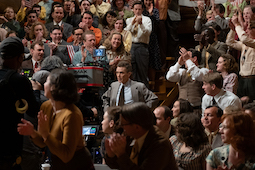
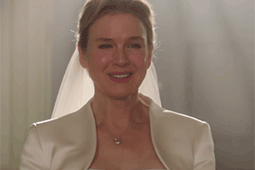
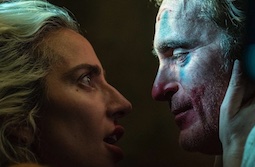
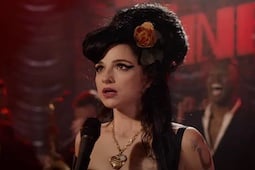
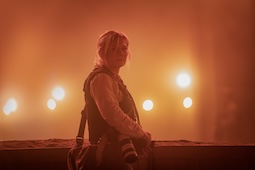
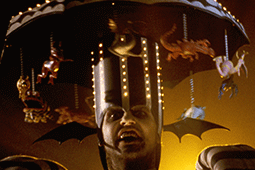
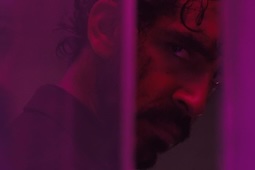
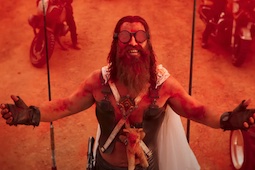
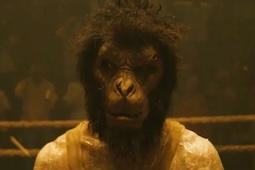
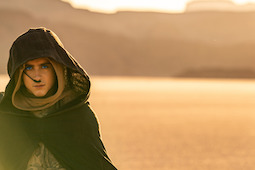
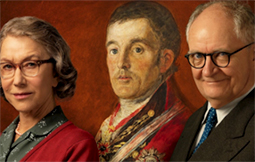
.jpg)
.jpg)

.jpg)
.png)



